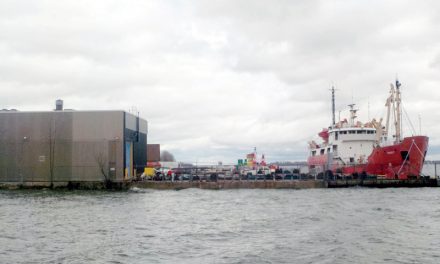OTTAWA – The world population is projected to reach 8.5-billion by 2030, compared to 7.3-billion currently. Consequently, the global demand for agricultural products is anticipated to increase by 15 per cent over the coming decade. On the other hand, the agricultural productivity is expected to increase faster over the same period leading to prices of major agricultural products to remain lower or at their current level. The agricultural techno- logical innovation leads to yield enhancements, higher production intensity and higher output despite agricultural land use that remains globally constant. Otherwise, the carbon intensity is projected to decline because of the pressures on agriculture to reduce the carbon footprint. The direct greenhouse gas emissions from agriculture are expected to grow by 0.5 per cent annually in the coming decade, compared to 0.7 per cent in the past 10 years. However, some uncertainties are present about the risks facing agriculture, such as the spread of plants and animal diseases, disruptions from trade tensions, resistance to antimicrobial, extreme climatic events, and the regulatory responses to new techniques in plant breeding. This outlook was published recently in the annual report of the Organization for Economic Co-operation and Development (OECD) and the United Nations’ Food and Agriculture Organization (FAO). The projections by commodity presented here were extracted from the published report.
Cereals
The global production of cereals is expected to increase by 1.2 per cent per year, due to yield improvement, to reach 3,053-million tonnes in 2028. Maize production is projected to increase the most (+181-million tonnes), followed by wheat (+86-million tonnes), rice (+66-million tonnes), and other coarse grains (+35-million tonnes). The industrial use of cereals as biofuels or starch is anticipated to have a modest increase.
World trade in cereals is projected to increase by 20.3 per cent to reach 503-million tonnes by 2028. For wheat, the Russian Federation has become the top exporter of wheat since 2016, surpassing the European Union. The world wheat price is expected to decline slightly from USD 241/tonne in 2018 to USD 238/tonne in 2028. For maize, the United States will remain the lead exporter. The world maize price is projected to increase from USD 160/tonne in 2018 to USD 186/tonne in 2028. For the coarse grains (sorghum and barley), the European Union and Australia are expected to continue to be the main exporters. Similar to wheat, the world coarse grains prices are expected to decline slightly from USD 221/tonne in 2018 to USD 216/tonne in 2028. For rice, India, Thailand, Viet Nam and Pakistan will continue as the top global suppliers. The world rice price is expected to increase from USD 447/tonne in 2018 to USD 470/tonne in 2028. How- ever, the international trade environment for cereals is facing some uncertainties due to trade tensions and new regional trade agreements.
Oilseeds
Vegetable oil includes oil obtained from the crushing of soybeans and other oilseeds (about 55 per cent of world vegetable oil production), palm oil (35 per cent), as well as palm kernel, coconut and cottonseed oils. The global soybean production is projected to continue to expand at 1.6 per cent yearly due to the production growth over the coming decade in India, the Russian Federation, Ukraine, and Canada. Global demand for vegetable oil will expand by +28-million tonne by 2028, which is likely to draw down high inventories and support vegetable oil prices over the outlook period.
Meat
Total meat production is projected to expand by more than 40-million tonne by 2028, reaching nearly 364-million tonne. Despite the growth in demand for animal protein in the next decade it is projected to slow down in the world. The global meat consumption per capita is projected to increase by 1.2 per cent to reach 35.1 kg retail weight equivalent by 2028 due to the continued income growth. The global meat production is projected to be 13 per cent higher in 2028. Meat production continues to be dominated by Brazil, China, the European Union, and the U.S. The price for beef and sheep meat are projected to decrease the most by 2028 to USD 3336/tonne, while pig meat and poultry prices are projected to decline to USD 1,453/tonne product weight. However, animal disease outbreaks, sanitary restrictions and trade policies will remain the main factors that drive the evolution and dynamics in the world meat markets.
Dairy and dairy products
The global milk production consists of 81 per cent cow milk, 15 per cent buffalo milk, and a total of 4 per cent for sheep, goat and camel milk combined. The world milk production is expected to grow at 1.7 per cent yearly to reach 981-million tonne by 2028. The highest average yield per cow is expected to occur in North America as the share of grass-based production is low and feeding is focused on high yields.
The major dairy product exporters are the European Union, New Zealand, Australia and U.S. Milk is internationally traded mainly in the form of processed dairy products. Approximately 8 per cent of world milk production is traded internationally. The seasonality of milk production in the case of grass-based systems resulted in seasonal variation of international prices with peaks around the mid of the calendar year, especially for butter. Also, animal diseases can have a big impact on milk production and prices. The relatively high price for milk fat may lead to the substitution of milk fat with vegetable fats.
Overall, the OECD-FAO Agricultural Outlook 2019-2028 provides a comprehensive baseline scenario for agricultural markets at national and global levels. The full report of 321 pages is available online at: http://www.agri-outlook.org/.













